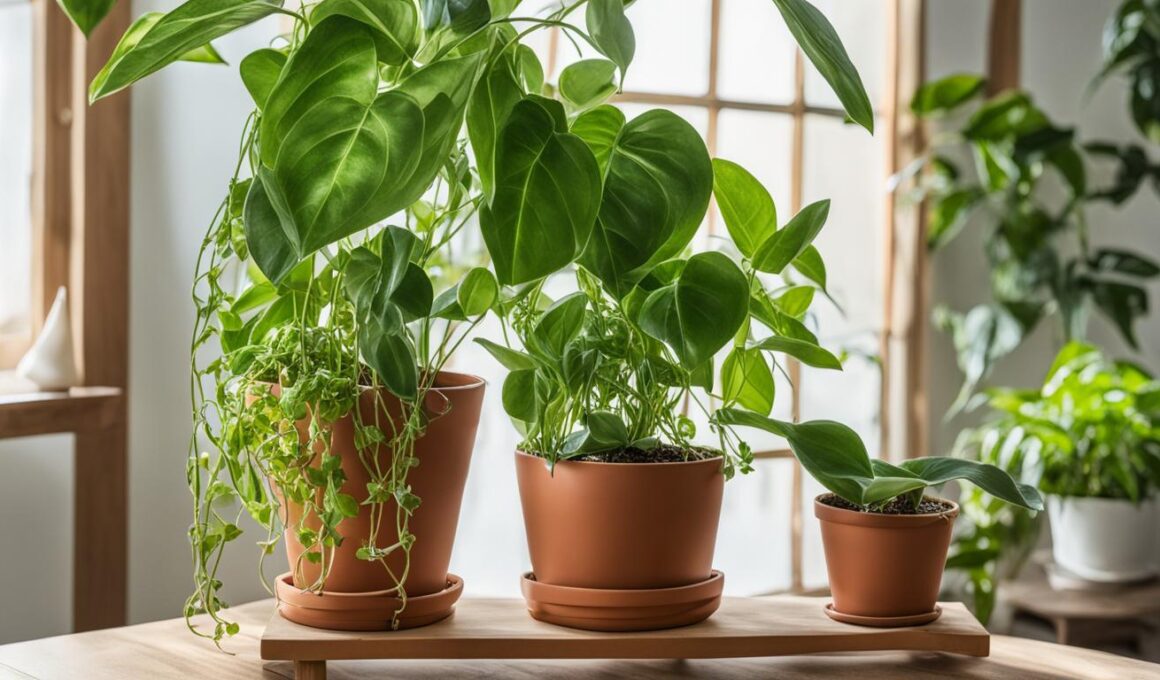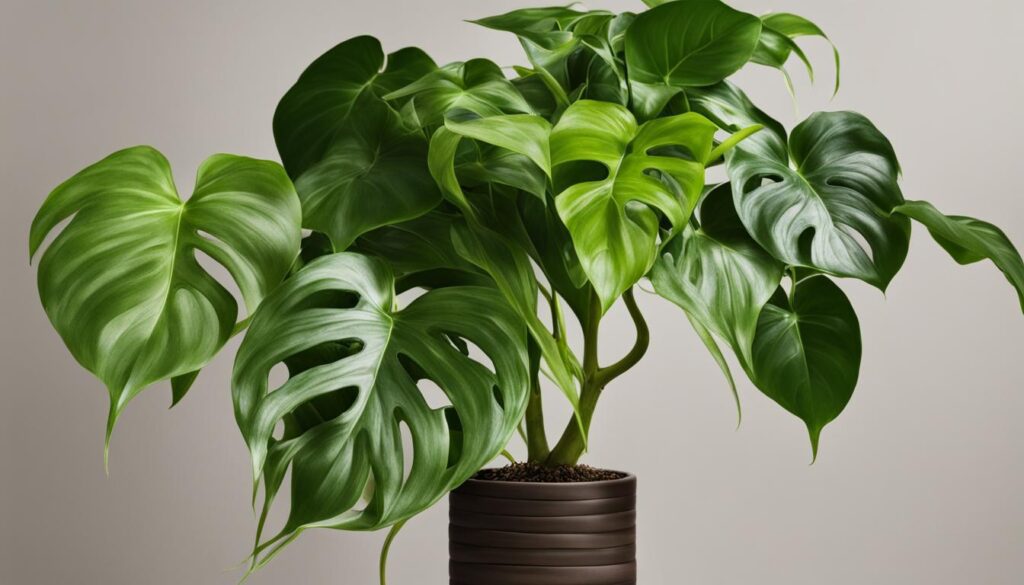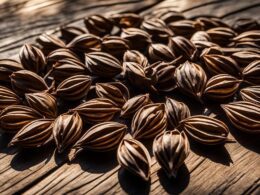If you’re a fan of houseplants, you’ve likely come across two popular foliage favorites: Pothos and Philodendron. At first glance, these plants may appear similar, but they have distinct characteristics that differentiate them. Understanding the differences between Pothos and Philodendron can help you properly care for these beautiful houseplants and ensure their optimal growth.
Pothos and Philodendron belong to the same family (Araceae) and are climbers in their natural habitat. However, their leaves, aerial roots, stems, and care requirements differ. By examining the leaf shape, texture, presence of aerial roots, and stem characteristics, you can easily identify whether you have a Pothos or a Philodendron in your collection.
Stay tuned as we delve deeper into the distinguishing features of Pothos and Philodendron. Let’s explore the fascinating world of these two houseplant wonders!
Leaf Shape and Texture
One of the easiest ways to distinguish between Pothos and Philodendron is by examining the shape and texture of their leaves. The leaf shape and texture provide valuable clues to help you identify these popular houseplants.
Leaf Shape: Pothos leaves have a unique shape that is often compared to a gardening spade. They are broad with a prominent indented midrib, giving them a distinctive look. On the other hand, Philodendron leaves are more heart-shaped, with a prominent sinus and a more dramatic tail-like apex.
Leaf Texture: When it comes to texture, Pothos leaves have a thicker and waxy feel. They also have a slightly raised or bumpy texture, adding to their visual appeal. In contrast, Philodendron leaves are thinner and have a smoother texture, giving them a more delicate appearance.
Visual Comparison:
Leaf Shape and Texture Summary:
To summarize, Pothos and Philodendron have distinct leaf shapes and textures. Pothos leaves have a spade-like shape with a thick, waxy texture, while Philodendron leaves are heart-shaped with a smoother texture. By observing these characteristics, you can easily differentiate between the two and enhance your understanding and appreciation of these beautiful plants.
Aerial Roots and Stems
Another distinguishing feature between Pothos and Philodendron is the presence of aerial roots and the characteristics of their stems. Both plants have aerial roots that they use to climb and absorb nutrients from the air. However, there are notable differences in the aerial roots of Pothos and Philodendron.
Pothos: The aerial roots of Pothos are thicker in comparison and typically have one root extending from a node. These aerial roots provide stability as the plant climbs and enable it to absorb moisture and nutrients.
Philodendron: In contrast, Philodendron aerial roots tend to grow in groups and are thin and spindly. These roots also serve the purpose of anchoring the plant and aiding in nutrient absorption.
When it comes to stems, Pothos and Philodendron also display distinct characteristics.
Pothos: The stems of Pothos are thicker and usually exhibit a color similar to the leaves. This consistency in color throughout the plant creates a visually appealing look.
Philodendron: On the other hand, Philodendron stems are often greenish-brown, with orangey-brown extended stems near the base. This color variation adds an interesting contrast to the overall appearance of the plant.
Understanding the differences in aerial roots and stems between Pothos and Philodendron can aid in accurate identification and proper care of these captivating houseplants.
Conclusion
In conclusion, Pothos and Philodendron may look similar at first glance, but there are significant differences that set them apart. Understanding these differences is crucial for plant enthusiasts who want to properly care for their Pothos and Philodendron.
The first noticeable difference is in the leaf shape and texture. Pothos leaves are thicker and have a bumpy texture, resembling a gardening spade. Philodendron leaves, on the other hand, are thinner, smoother, and more heart-shaped.
Aerial roots and stem characteristics also help distinguish between these two plants. Pothos aerial roots are thicker and typically have only one root extending from a node, while Philodendron aerial roots can grow in groups and are thin and spindly. Additionally, Pothos stems are thicker and match the color of the leaves, while Philodendron stems are often greenish-brown with orangey-brown extended stems near the bottom.
By considering these differences in leaf shape, texture, aerial roots, and stems, plant enthusiasts can confidently identify and care for their Pothos and Philodendron. Whether purchasing or propagating these popular houseplants, understanding these unique characteristics is essential for their optimal growth and overall well-being.
Can Pothos or Philodendron plants produce fruit like a mulberry tree?
Pothos and Philodendron plants do not produce fruit like a mulberry tree. When identifying mulberry fruit and trees, you’ll notice that they have small, sweet, and juicy berries that are dark purple or black when ripe. Pothos and Philodendron are non-fruiting plants, often grown for their lush foliage.










